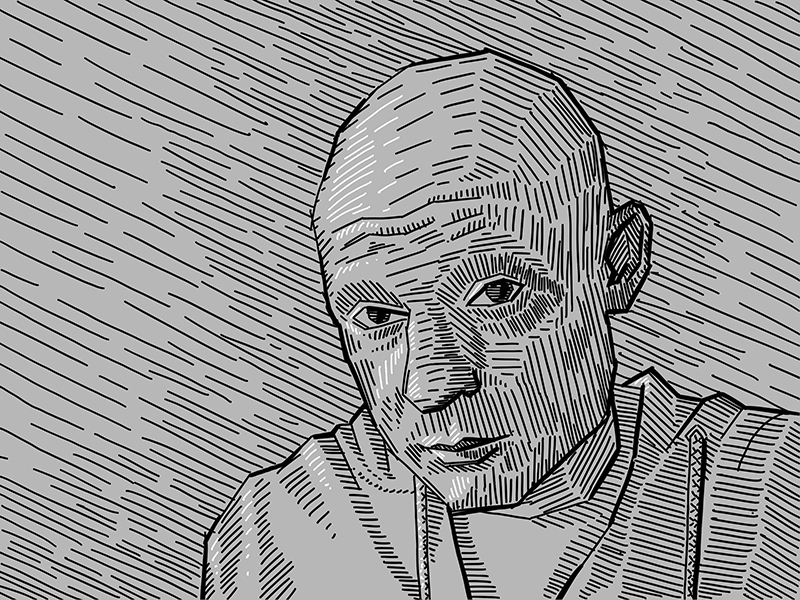

Leonardo created a myriad of proportional studies based on the writings of the Roman Architect Vitruvius. Michelangelo being a sculptor followed the Greek Canon, the others were more interested in examining individual differences based off of the classic ideal. Move ahead eighteen hundred years to the High Renaissance, and we have the humanistic investigations of Leonardo, Durer, Michelangelo, and Vesalius. The High Renaissance And The Rediscovery Of The Ideal.

The Contrapostto Pose introduction was a game-changer and was passed from the Greeks to the Romans and revived in the Renaissance. Contrapposto is less emphasized than the more sinuous S Curve and creates the illusion of past and future movement. The leg that carries the body’s weight is known as the engaged leg, the relaxed leg, as the free leg. This also results in the opposition of shoulders and hips for example: if the right hip is higher than the left, correspondingly, the right shoulder will be lower than the left, and vice versa. This gives the figure a more dynamic or relaxed appearance. It is also an early example of Contrapposto, which refers to having most of its weight balanced over one foot.Ĭonsidered the Greek’s pivotable contribution to the history of western art, its appearance marks the first time in that the human body expresses a more relaxed psychological disposition. His Bronze statue of Doryphoros, the spear bearer, gives us an example of the Canon of Proportions used by the Greeks for over a hundred years. We know the figure’s height in the Polyclitus Canon to be seven heads, we do not know the other measurements. These works were often considered blasphemous by various religions or sects and subsequently destroyed. This manuscript has, unfortunately, disappeared. The Rhythm And Balance Of The Contrapposto PoseĪccording to Pliny the Elder, Polyclitus created the definitive Canon of Proportions in book form. They may be used afterward to determine accuracy, but using these arbitrary units of measure early on saps all the energy out of the drawing.

Referring to tables and charts and using mechanical measuring devices is alien to the creative process. Employing elaborate systems of measurement may be adequate for builders, but it is cumbersome in dealing with the human form. The Measure of ManĪll cultures and dynasties relied on standard units of measure to build their monumental artworks. It disappeared for a thousand years during the Dark Ages 5thc to 15thc., and resurfaced during the Italian Renaissance. Proper proportion is the foundation of the creative process.įrom Ancient times until quite recently there has been a healthy relationship between Philosophy, Art and Science. Achieving the proper proportion through balance, rhythm, and harmony is the goal of discovering the universe’s natural order. Though the subject of proportion is often associated with the human form, it is much more than that. All things out of proportion are devoid of harmony. This is true of all the Fine Arts, i.e., painting, sculpture, architecture, music, and poetry. This artwork reminds me of building blocks that I used to play with and stairs because of how the buildings are shaped and staggered.Proportion, Order, and Harmony are the core of the success and vitality of any art form. I also like the darker abstract style building on the left of the work.
#Harmony in art windows#
I like Windows as every part of it catches your eye and has as an interesting pattern of windows and buildings. Due to the repetition in this work the theme is somewhat sad because there is no signs of life, personality or individuality. However the bright use of purples and bold black and the different shapes of the windows provides some interest in the scene for audiences. The work shows a monotony and consistence of high rise city living.

The square and rectangular windows and building shapes shows some variety and the purple toned color scheme relates all of the structures as a unit. Harmony is used right across the whole painting in a unified manner that forms an abstract pattern. Th e main Principle of Art and Design evident in Window s is Harmony. It is held at the Hirschl and Adler Galleries in New York, USA. This Painting uses oil on canvas and is sized 81.3 x 51.1 cm. Windows by Charles Sheeler was created in 1951.


 0 kommentar(er)
0 kommentar(er)
